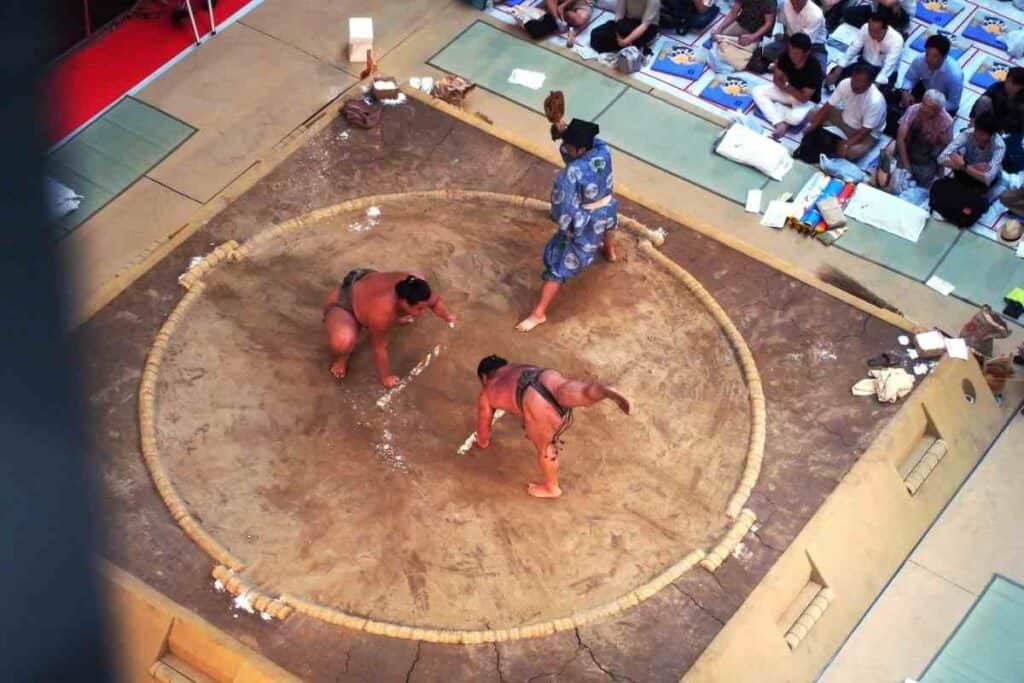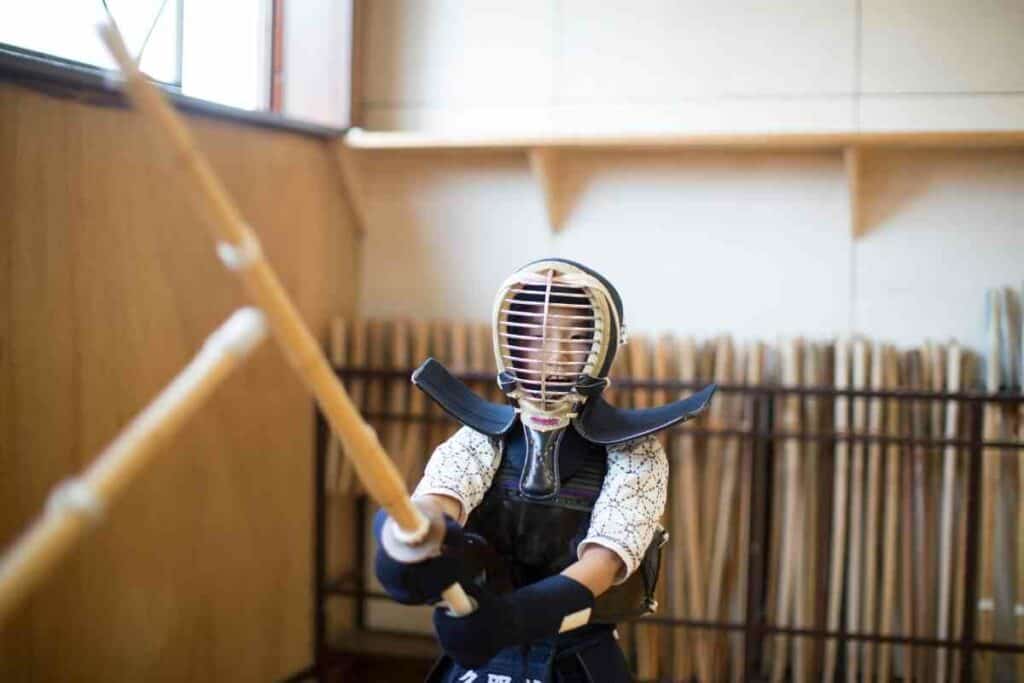Sumo matches are marked with several rituals, one of which is throwing salt.
Salt is thrown to purify the ring and the wrestlers. It is believed to have magical properties in almost any civilization, and Japanese people are no exception.
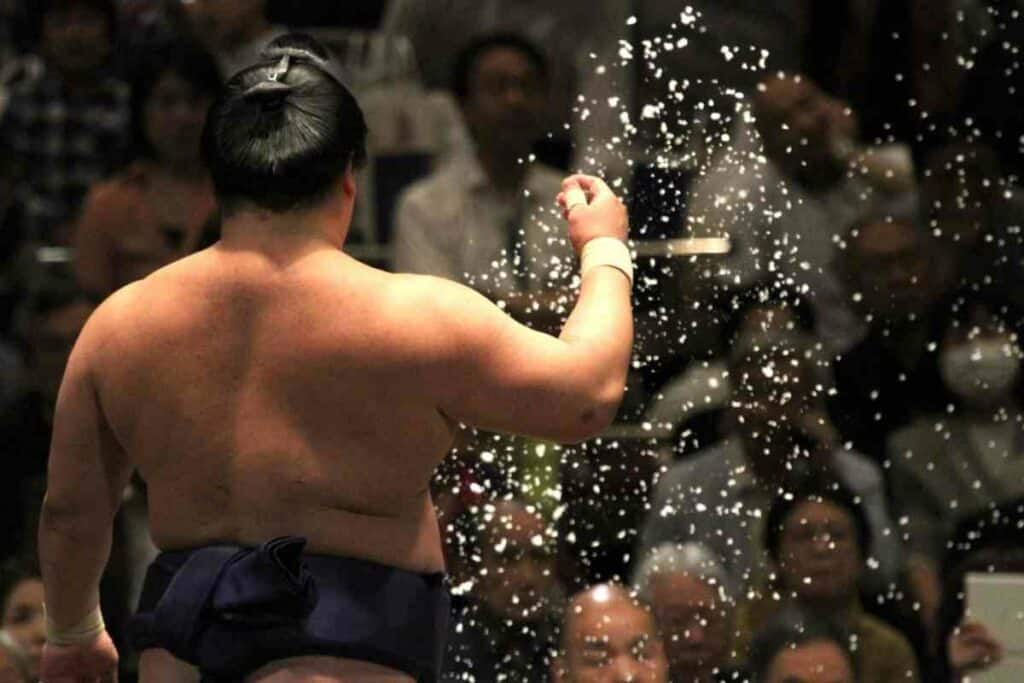
Thus, the wrestlers use salt throwing to purify the dohyo before a match. Additionally, it signifies that the fighters are at the mercy of the mystical powers of the divine.
Salt also acts as a drying agent and disinfectant. When wrestling, wrestlers usually get sweaty hands; thus, salt removes moisture from the hands.
Additionally – Salt contains antibacterial properties that are beneficial in removing any bacteria from their hands.
Table of Contents
History of Sumo and Salt
Sumo is regarded as the oldest organized sport and began as a ritual in Shinto ceremonies.
Although there is no exact date when the sport started, it is reported by some legend that it was started 2,000 years ago in Japan as a way of entertaining the gods.
Therefore, there are several religious rituals associated with the sport.
However, the game was standardized during the Edo Period (1600-1868), when the game’s rules were formalized.
After the standardization of the game, Shinto purification rituals were also adopted and are still practiced to date.
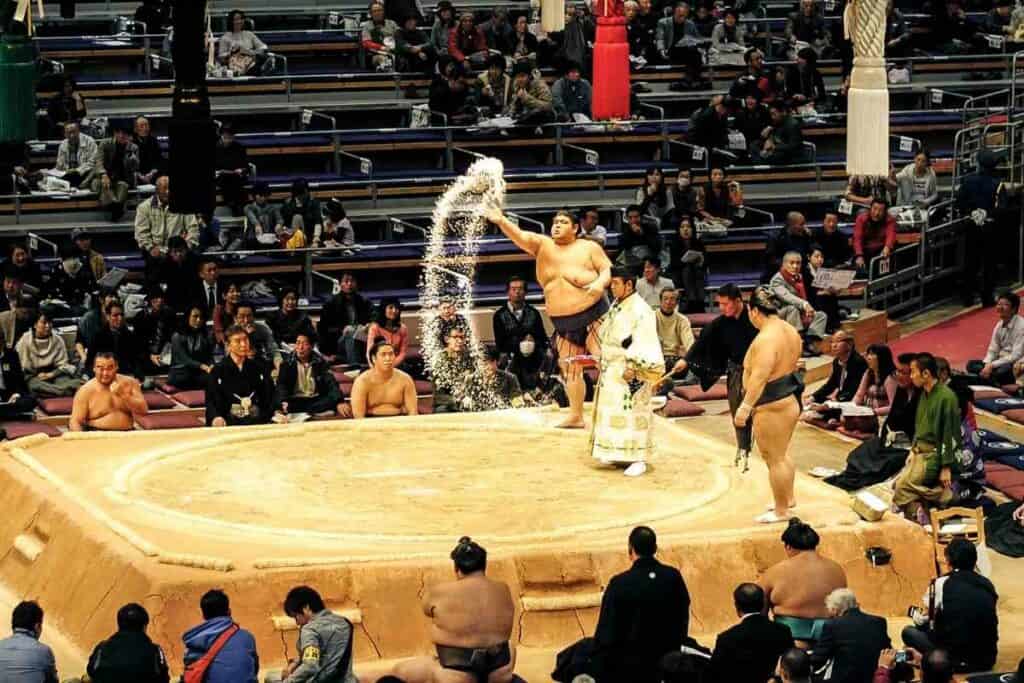
Some of the traditions still practiced even today include clapping of hands to get the gods’ attention, throwing a handful of salt to appease the gods, and stomping of feet to chase away evil spirits from the ring (dohyo).
Sumo’s connection with the magical properties of salt was adopted from Shintoism. In Shinto, salt is used to purify.
According to Shintoism – Salt was left outside the house in little piles (mori shio) to purify the people entering that house. When people passed the salt when entering the house, they believed they were purified of any evil spirits.
Furthermore, after attending a funeral, the Japanese used the salt left outside the house to purify themselves.
Booking.comThey used to pick the salt and scatter it all over their body to purify themselves.
Salt holds immense significance to the Japanese people who believe it contains magical powers.
For Example – Restaurants owners left mori-shio piles at the entrance of their establishment to attract rich and noble clientele.
Sumo originated from Shinto. Thus, most sumo rituals are connected to Shinto traditions.
Harae is a term that refers to ritual purification in Shinto to wade off bad luck and purify a person from his sins.
In Shinto ceremonies, a ritual called shubatsu involves sprinkling salts on priests or worshippers or on the ground to purify it.
I believe the same ritual is practiced by sumo wrestlers when they sprinkle salt on the ring to purify it. The ring is considered a sacred place.
Role of Kami in Sumo
Kami are Shinto gods and can be either good or evil.
Japanese believe that when people die, they become kami. The most revered kami is the Sun Goddess Amaterasu from when the first sumo wrestler is believed to have descended.
Because kami can be either good or evil, Shinto culture holds regular matsuri festivals to honor kami.
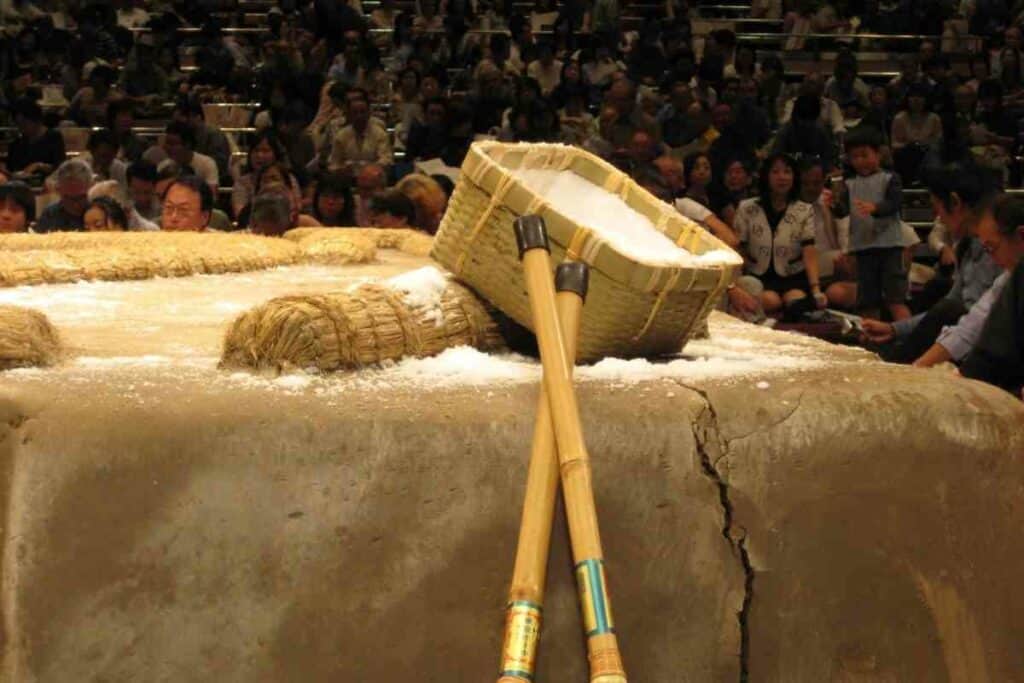
The rituals involve performances, offerings, and rituals, and in return, the people are blessed and protected by the kami.
During those rituals, sumo matches were used to appease the gods.
Some of the rituals performed during sumo matches were to appease and celebrate the gods, such as clapping hands and stomping their feet.
However, throwing salt purifies and wades off evil spirits from the ring.
Do Sumo Wrestlers Use Salt as a Purification Agent?
The role of salt in purification has been observed in several cultures, not only in Japan.
The Roman Catholics used water and salt to prepare holy water, and Indians used salt to wound away evil spirits.
Therefore, across the continent, most cultures believe that salt contains magical power, and it has been used to protect people against psychic attacks and to dismantle unsolicited psychic phenomena.
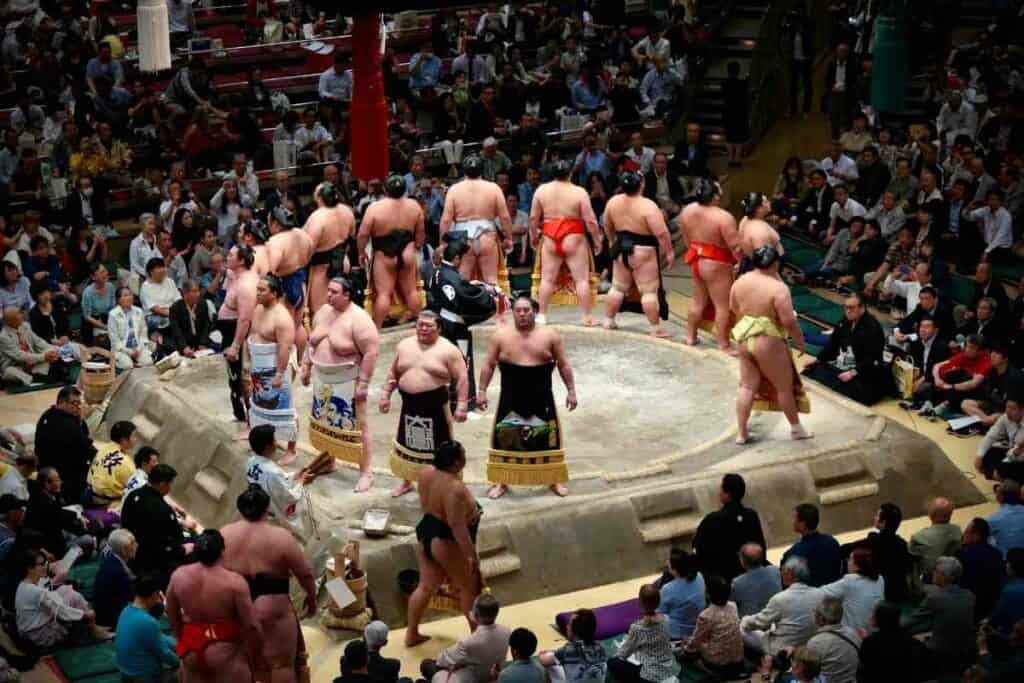
Priests are regarded as righteous and pure; thus, when preparing for ceremonies, they take a bath with salt as the main component.
Additionally – Ritual materials and objects are cleaned by inserting them in salty water. Salt has also been used in spells as it is believed to absorb psychic energy. Some people believe that salt can transfer a wish or a spell to higher dimensions.
It is also believed that sprinkling salt into water or river clears connection from the aura or removes misery/burden.
What is the Importance of Salt in Japanese Traditions?
In most western cultures, salt is mainly used in food and is also connected to several health conditions, but Japanese people consider salt sacred.
They believe salt is a preserver of purity and a cleanser. Misogi, a purification similar to baptism, uses salt to drive away evil spirits.
Shinto, from where sumo originated, has purifications rituals with salt as the main ingredient among the three items offered to the Shiotsuchi Oji no Kami.
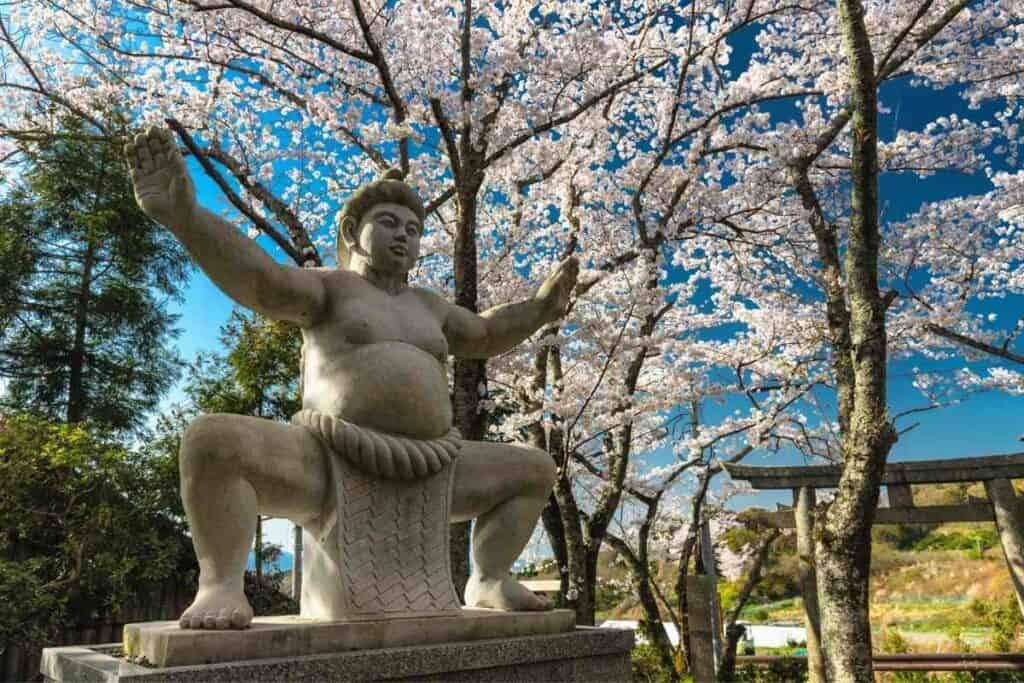
Shinto conducted a yearly ritual to honor Shiotsuchi Oji no Kami, who showed humans the process of extracting salt from seawater.
Did you know:
- A woman must purify herself and the space during childbirth by bathing in saltwater and scattering salt around the room, respectively.
- After removing the coffin from the house during funeral services, salt is sprinkled in the room to wade off evil spirits. Furthermore, after attending a funeral, attendees scatter salt on the body and at the entrance of their home to prevent the spirits from following them into their houses.
- For most business owners placing salt at the doorway shows customers that they value cleanliness and purity. Furthermore, shaping salts into cones and replacing them daily signifies respect and care for their business.
Other Rituals that use Salt
Salt is mainly used during purification ceremonies in Japan.
The Oharae is the ceremony of great purification used to remove evil spirits and sins from a large population. It is usually carried out at the end of June and December.
The ceremony is conducted in shrines and at the Imperial Homestead to purify the whole community and society.
It is performed after a major disaster, and salt is commonly used.
Final Thoughts
Salt is part of Japanese culture as they believe it has cleansing and purifying properties.
From where sumo originated, Shinto used salt during various rituals, including appeasing the gods and purifications.
Sumo wrestlers continued with the traditions.
Therefore, the sumo fighters throw salt to purify the ring before starting the game. Additionally, they do so to honor and entertain the kami.
Salt also removes moisture from their hands and acts as antibacterial agent.

